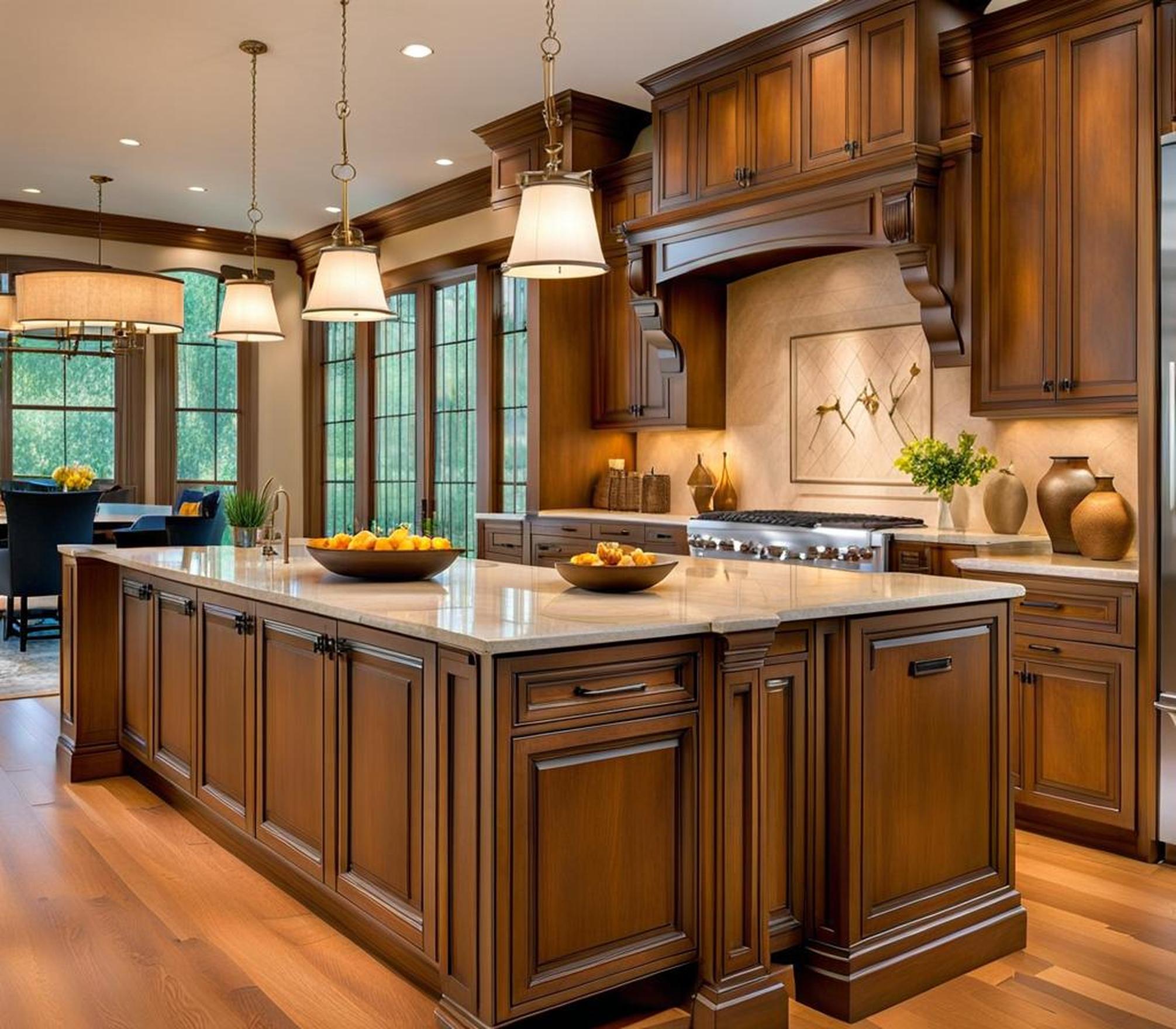Full overlay cabinets are a contemporary kitchen cabinet option that can transform the look and feel of your cooking space. But how do you know if they are the right choice for your home?
With this information, you can determine if full overlay construction is a good fit for your kitchen remodeling plans.
What Are Full Overlay Kitchen Cabinets?
Full overlay cabinets feature doors and drawers that cover nearly all of the cabinet’s face frame and box sides. This leaves only a minimal gap between adjacent cabinet components – usually 1/8″ or less.
The full overlay style provides a streamlined, contemporary look that’s popular in modern and European-inspired kitchen designs. It’s a noticeable departure from more traditional partial overlay cabinets that have wider gaps of 1/4″ to 1/2″.
Key Differences from Partial Overlay Cabinets
- Partial overlay cabinet doors and drawers don’t fully cover the face frame
- Partial overlay has visible gaps between components
- Partial overlay has a more traditional style
- Full overlay has a modern, minimalist aesthetic
The Pros: Why Choose Full Overlay Cabinets?
There are several compelling reasons to select full overlay cabinets for your kitchen remodel or new construction project.
Contemporary, Minimalist Aesthetic
Full overlay cabinets align perfectly with contemporary, minimalist design trends. The lack of gaps and offsets creates clean sightlines for a streamlined look. This can help maximize the feeling of space in both small and large kitchens.
Space Efficiency and Storage Capacity
The full overlay construction eliminates the wasted space between doors, drawers, and cabinet frames. As a result, full overlay kitchens can provide slightly more usable storage capacity compared to partial overlay designs.
Toekicks can also be minimized with full overlay cabinets. This further expands the contemporary aesthetic.

Flexible Design Options
While full overlay cabinets promote a pared-down look, the doors themselves come in a wide range of materials, textures, and styles. Full overlay integrates seamlessly with glass, solid slab, shaker, arched, and raised panel doors. This stylistic flexibility allows full overlay cabinets to fit with your overall kitchen vision.
The Cons: Potential Drawbacks of Full Overlay
While the pros often outweigh the cons, full overlay cabinets aren’t necessarily perfect for every home. Here are a few potential downsides to consider:
Limited Interior Accessibility
The tight fit between full overlay doors and cabinet frames can occasionally make interior access a bit tricky. Smart storage accessories and careful organizational plans are a must.
Precise Installation and Planning
Achieving the proper minimal reveals and clearances requires precise measurement and installation. Expect the overall cabinetry installation process to take longer, and lean on an experienced kitchen designer.
Added Cost
Due to specialized hinges, more complex installation, and higher-end styles, full overlay cabinets will cost more than comparable partial overlay options. Expect to pay approximately 10% to 15% more for materials and professional installation.
Tips for Integrating Full Overlay Cabinets
To ensure success with a full overlay kitchen, keep these tips in mind:
- Allow proper clearance next to walls and between cabinets
- Use specialty hinges to enable full range of motion
- Carefully plan interior storage and accessories
- Consider glass doors for upper cabinets
Plan Room for Proper Clearances
Having adequate clearance between full overlay cabinets, walls, islands, and appliances is crucial. While 3″ is generally sufficient, bump outs, moldings, and other obstructions may require more space.
Specialized Hinges Are Essential
Standard hinges won’t allow full overlay doors to open fully without collision. Opt for specialty hinges designed to provide the required 120deg to 180deg swing.
Maximize Usable Interior Space
Take advantage of the efficient footprint by maximizing usable space. Pull-outs, roll-outs, and other smart organizational systems help compensate for trickier access.
Add Glass Doors Above Eye Level
The minimal lines of full overlay can occasionally feel too “shut in” if all upper cabinets have solid doors. Glass doors above eye level retain the streamlined look while keeping things open and airy.
When planned properly, full overlay cabinets offer a customized look perfect for contemporary kitchen designs. Just be sure to partner with experienced kitchen designers to plan required clearances and functionality.
While more expensive than partial overlay, full overlay cabinets provide a clean, minimalist aesthetic that can transform your cooking space. Focus on precision during installation, and the pros should easily outweigh the cons.
